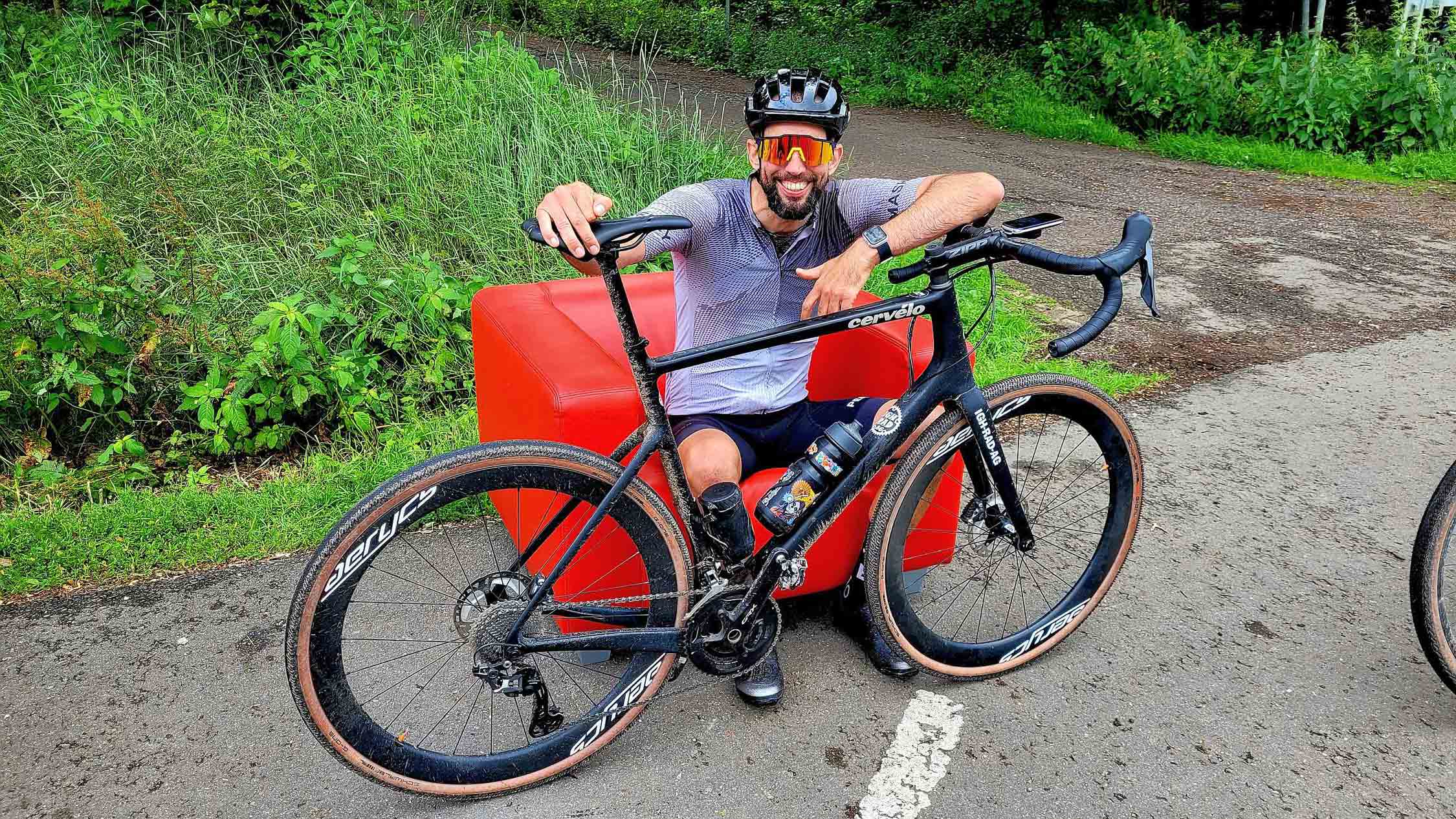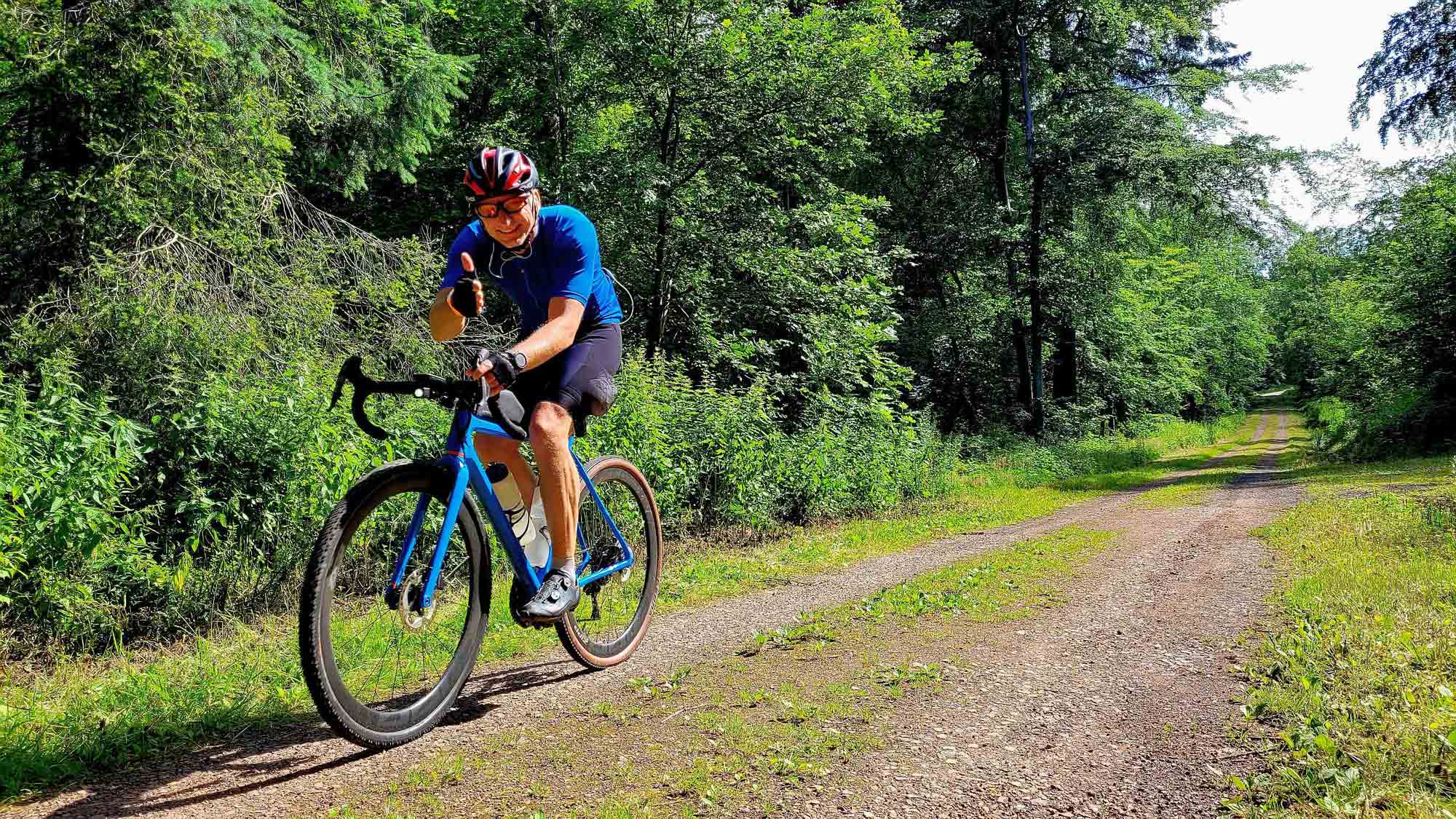For the last eight years, Timo Rokitta has organised the Nibelungengravelride, a non-competitive gravel event which takes participants through some of the best scenery in the south of Germany. This year, sunshine, great trails and the traditional post-ride flame grilled Salmon were all present and correct, but was else was there? Timo completes the story.

For the eighth edition of the renowned Nibelungengravelride, the organisers came up with something special once again. For the second time since 2019, the event took participants to the Mountain of the Celts, the well-known Donnersberg, the highest peak in the Palatinate region of Germany at 687.5 meters.
The Donnersberg, with its massive structure, dominates its surroundings and has held a magical attraction for our ancestors for over 2000 years. It was the Celts who established one of the largest urban settlements north of the Alps on its ridge. The Donnersberg was formed around 300 million years ago from several volcanic mountains that merged into a large massif. Today, the highest mountain in the Palatinate is primarily a paradise for outdoor enthusiasts and nature lovers.
This year, over 250 participants started the event, not only to enjoy the impressive landscape but also to do something good, as 15 euros from the entry fee went directly as a donation to the children's hospital of the Worms Clinic.
But let's start from the beginning: Shortly before the start, DJs fired up the bikers with rock anthems and there were even a few live interviews with participants, some of whom were a bit apprehensive about the route. When the fog machine enveloped the area in white smoke, the starting gun sounded precisely at 8 a.m. for the nearly 90 riders of the long course, who had to cover 170 kilometers and 2,600 meters of elevation.

The temperatures were optimal at 20 degrees and the sun was shining in the blue sky. The first few kilometers were flat, passing through the Rhine plain and then through the Zellertal. Here, the first climbs, some over rough cobblestones, awaited the participants. The closer the riders got to the Donnersberg, the steeper it became. From Dannenfels, it was very steep uphill, turning onto a singletrack trail at the Gethsemani Monastery. Here, the track led through the beautiful forest, with several fallen trees blocking the trail, requiring the gravel bikes to be lifted over them.
After the "Bastenhaus" parking lot, there was a short stretch on the paved high road before continuing steeply up a wide but easily navigable forest path. At a trail junction, the first strenuous part was over and on a beautiful forest track, it rolled smoothly to the parking lot where the well-stocked refreshment station was set up.
This was also the central hub for all routes. The 100 km riders turned off towards the Rhine plain and the finish after tackling the Donnersberg. The 140 km and 170 km heroes had to circumnavigate the Donnersberg, facing several challenging climbs. Along the way, there were always magnificent views of the landscape of the North Palatinate Uplands.

After the riders passed the refreshment station for the second time, they went down a fast gravel track for five kilometers. After the small village of Jakobsweiler, the track led through extensive fields into the dark Stumpfwald. On an excellent singletrack trail, it continued deeper into the forest, eventually emerging near the picturesque Eiswoog. From here, the participants rolled along the perfect tracks of the Barbarossa bike path along the Stumpfwald railway towards the Rhine plain. Before the small town of Mertesheim, the route planners included another highlight. The track ran along a barely handlebar-width trail — such hidden tracks are usually known only to locals.
At Heppenheim, the route changed from the small Eisbach stream to the small Pfrimm stream. The "Tour de Honneur" followed perfectly gravelled paths, making for a relaxed ride to the finish at the Pit-Pat area in Worms.
As always at the Nibelungengravelride, there was delicious flame-grilled salmon waiting on wooden boards for the finishers. After a refreshing shower, participants also had the opportunity to have their tired legs massaged by the therapists from the Worms Clinic.
But the best part came at the end - €5,000 was raised and donated to the Worms Children's Hospital.